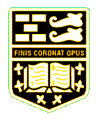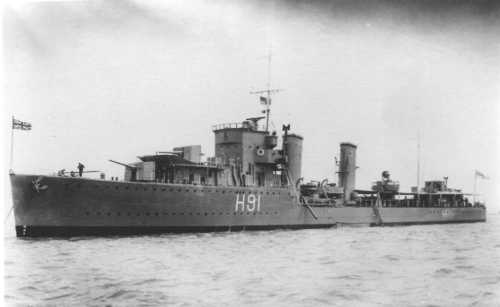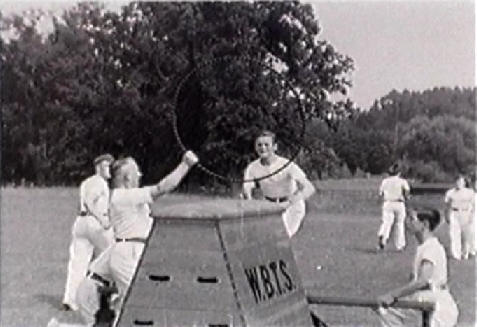|
HMS BULLDOG
In May of 1941, Commander Baker-Creswell was in command of the Royal Navy Destroyer HMS Bulldog. At that time,
the Germans had a coding machine called Enigma, which they believed allowed their naval ships to send and receive
messages from the Naval Command, that could not be broken by the British or their Allies. In particular, Admiral Donitz
used this machine to orchestrate the movements and attacks of his U-Boat Fleet in the Battle of the Atlantic. Bulldog was
attacking a U-Boat contact, suddenly, and unexpectedly U-110 surfaced, the immediate reaction of any Escort Captain is
to go full ahead and ram. Baker-Cresswell, in a split second decision, stopped his Destroyer from ramming this U-Boat,
and most likely sinking her. On his bridge, he recalled in his mind attending a Staff College lecture about the capture of
ciphers in 1914, from a stricken German Naval vessel. He quickly realised his opportunity to emulate this feat, and
ordered the launching of a boarding party from his ship under the command of Sub Lieutenant David Balme. On board
U-110, scuttling charges that were set, did not operate, and the British Sailors quickly located and collected Enigma, and
it’s essential accessories.
The First Sea Lord delighted
Admiral Sir Dudley Pound as First Sea Lord at the Admiralty was delighted with this coup. He signalled
"His Congratulations," and added " The petals of your flower are of rare beauty." rather cleverly acknowledging the
importance of this capture, and not disclosing its identity. Bulldog's Commanding Officer was awarded a Distinguished
Service Order, and at the investiture, King George V1 told him, your action is " The most significant event of the War at
Sea." For many years this story remained a tightly held secret - the Official Historian did not learn about it until 1957,
and the total story only saw the light of day, when, in 1997, Peter Padfield published his book " War Beneath the Sea.
"Joe Baker-Cresswell made it to Captain, Royal Navy, and retired in 1957, and lived to be 96, when he died in May of
1997. His quick thinking changed the course of "The Battle of the Atlantic." in particular, and "The War at Sea." In
general.
|




